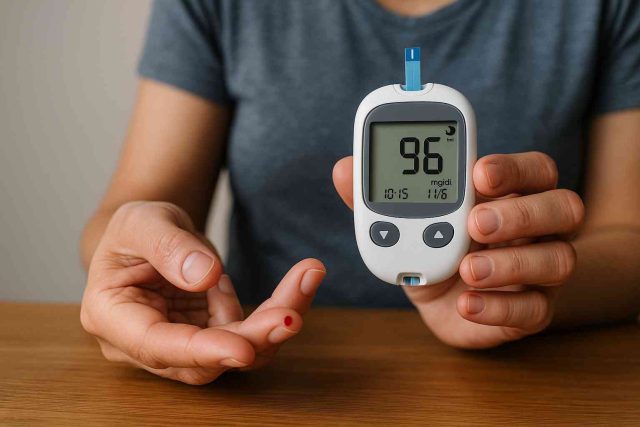Introduction
Do you ever wonder why managing sugar levels feels like walking a tightrope? In diabetes care, blood glucose control matters every single day. It shapes how people feel, their long‑term health, and risk of complications. This article explores everything from diet and medication to modern tools so readers can understand how to maintain good sugar balance without feeling overwhelmed.
Table of Contents
- What Is Blood Glucose Control and Why It Matters
- Lifestyle Strategies for Better Sugar Balance
- Medication and Technology: Modern Tools in Management
- Common Roadblocks and How to Stay on Track
- Conclusion
- FAQ
What Is Blood Glucose Control and Why It Matters
Effective blood glucose control means keeping sugar levels within a target range to reduce complications. For example, uncontrolled high levels can damage nerves, eyes, and kidneys over time. Conversely, low sugar can lead to dizziness or even loss of consciousness. Remember that maintaining glucose control isn’t just about numbers—it’s about daily well‑being and long‑term outcomes. For instance, the American Diabetes Association recommends individualized targets that a healthcare provider sets based on age and other factors. Good sugar balance helps people feel more energetic, stable, and confident in their daily lives.
Lifestyle Strategies for Better Sugar Balance
First, using whole foods helps—favoring vegetables, lean proteins, and whole grains can slow glucose spikes. Also, regular physical activity contributes significantly. For example, walking after meals often helps reduce post‑meal blood sugar surges. Moreover, consistent routines matter—eating at similar times each day supports stable levels. In contrast, skipping meals or eating late at night can disrupt balance. Actually, studies show that even simple resistance exercises lower readings by improving insulin sensitivity. However, some find it challenging to stay active every day. In that case, setting small, sustainable goals—such as 10 minutes of movement—can make a difference. Additionally, staying hydrated and managing stress through techniques like breathing or light stretching supports overall control. Finally, sleep quality matters. Poor rest often raises sugar levels, so aiming for 7–8 hours nightly supports better glucose control.
Medication and Technology: Modern Tools in Management
Medication plays a key role when lifestyle steps need a boost. For instance, branded drugs like metformin and newer options such as GLP‑1 agonists (like Victoza®) help the body regulate sugar better. Meanwhile, insulin therapy—for type 1 or advanced type 2—remains essential. It delivers precise dosing when required. Alongside medication, technology has reshaped control strategies. Continuous glucose monitors (CGMs) such as Dexcom® now stream live sugar data, alerting users to highs and lows. For example, wearing a CGM helps people spot trends and prevent dangerous swings. In addition, insulin pumps combined with smart algorithms can automate dosing in response to real‑time data. Readers may find helpful resources and stories on Diabetes In Control’s articles section. For advice about medication management, consider seeking guidance via Healthcare.pro.
Common Roadblocks and How to Stay on Track
Even with the best plans, roadblocks happen. For example, busy schedules can interfere with meal timing or exercise. To counter this, planning meals and packing snacks helps. Also, stress or illness often pushes sugar levels off course. In those moments, checking more often and adjusting as needed helps regain control. Another challenge is affordability—devices like CGMs or branded medications can cost a lot. Thankfully, patient assistance programs or insurance coverage often reduce expenses. Additionally, some users feel overwhelmed by data from tech tools. In contrast, starting with basic patterns—such as morning and evening checks—can avoid overload. Actually, keeping a simple log helps identify triggers and guide adjustments. Furthermore, psychological fatigue is real—diabetes burnout makes maintaining blood glucose control difficult. In such cases, reaching out for peer support groups or speaking with a mental health professional makes a big difference.
Small Strategies That Help
- Set reminders for checking or medication.
- Share glucose data with a care team friend for accountability.
- Celebrate small progress, like more days in target range.
Conclusion
Understanding blood glucose control means seeing it as a dynamic and achievable goal—not a burden. Effective strategies include smart food choices, consistent activity, medication when needed, and modern tools that support awareness. With patience and support, daily stability becomes routine. Remember, better sugar balance means fewer complications and a more energized life.
FAQ
What range counts as good blood glucose control?
Targets differ by age and condition, though often 80–130 mg/dL before meals and under 180 mg/dL after meals are used. Always confirm individual goals with your care provider.
Can continuous glucose monitors (CGMs) truly improve control?
Yes, CGMs help people track real‑time levels, prevent highs and lows, and adjust behavior promptly based on trends.
Are newer drugs like GLP‑1 agonists safe for most people?
Generally they are well tolerated. Still, talk with your healthcare provider about risks and benefits, especially with kidney issues or gastrointestinal sensitivity.
How can I overcome diabetes burnout?
Break tasks into small steps, build a support network, and talk openly with a provider or counselor about challenges.
Is stress management really that important for sugar levels?
Absolutely. Stress hormones raise glucose. Therefore, practices like breathing, relaxation, or light activity can significantly aid control.
This content is not medical advice. For any health issues, always consult a healthcare professional. In an emergency, call 911 or your local emergency services.
